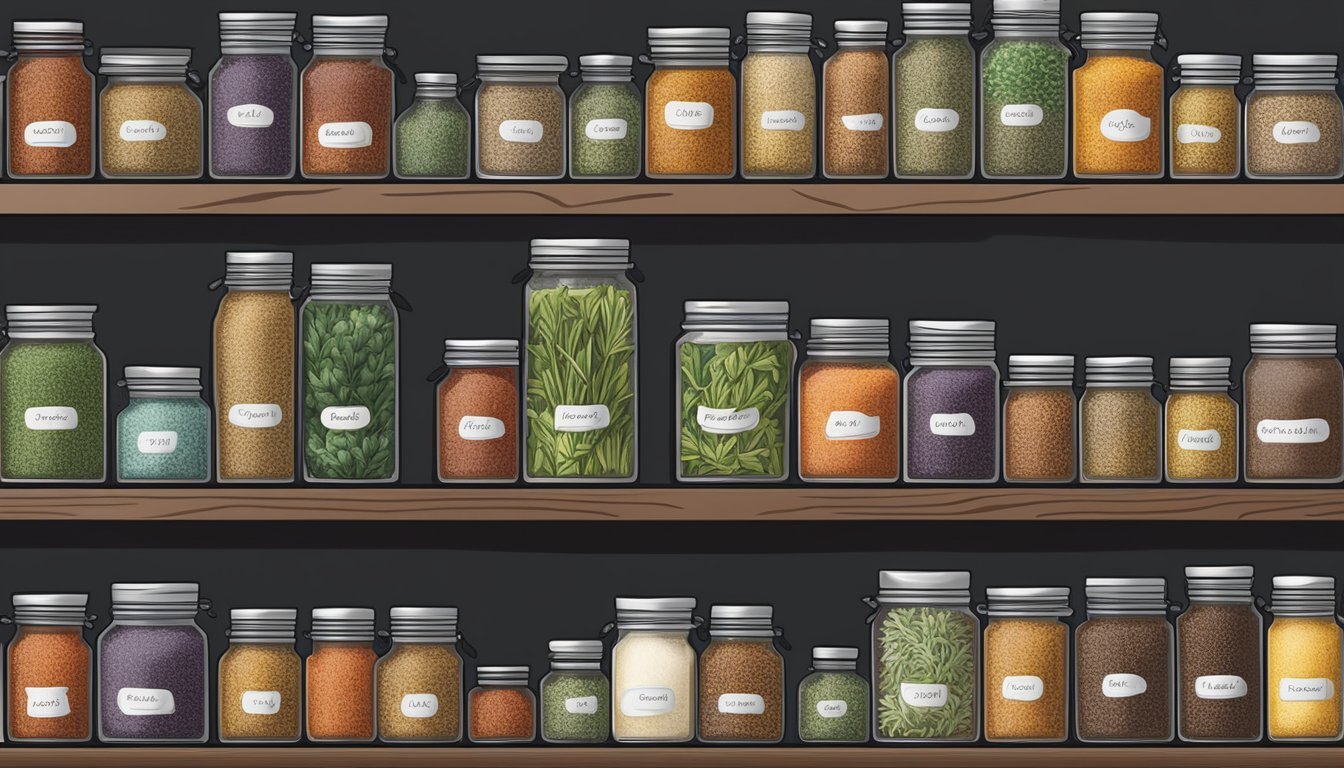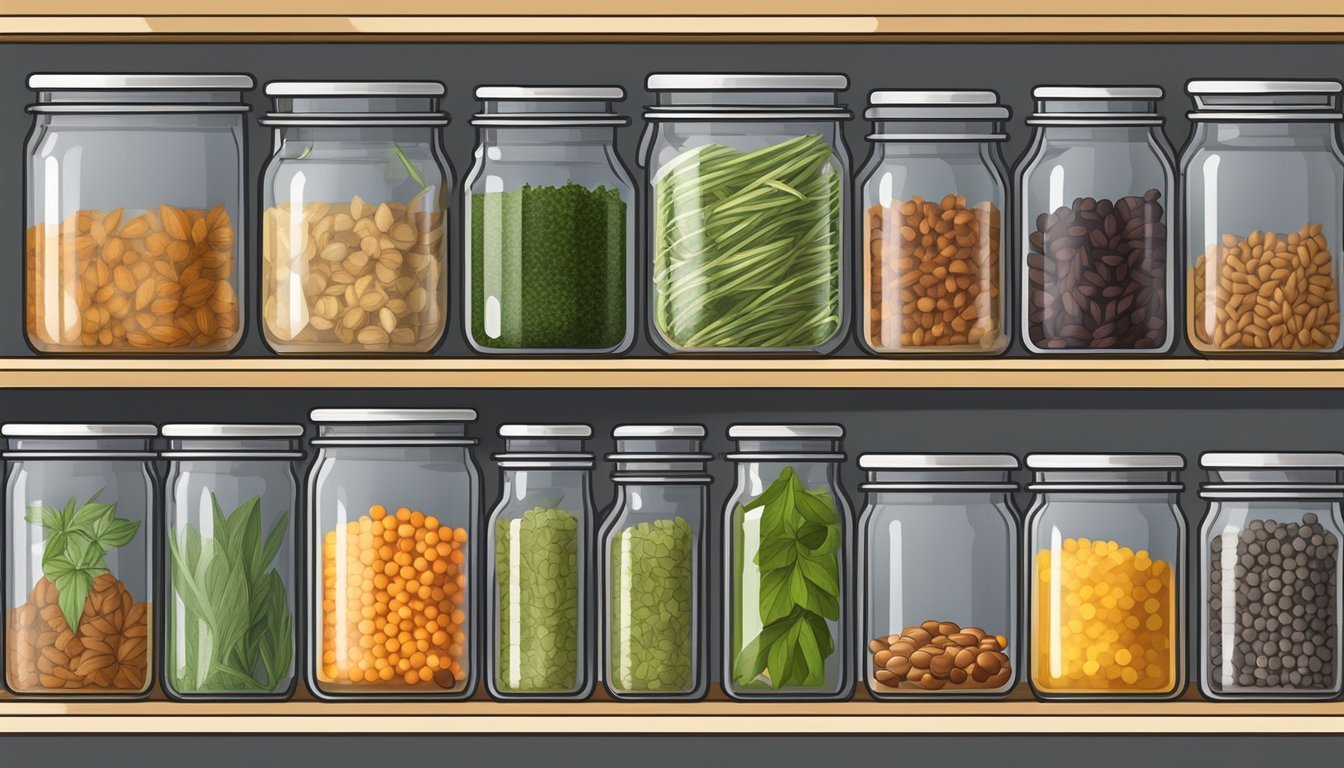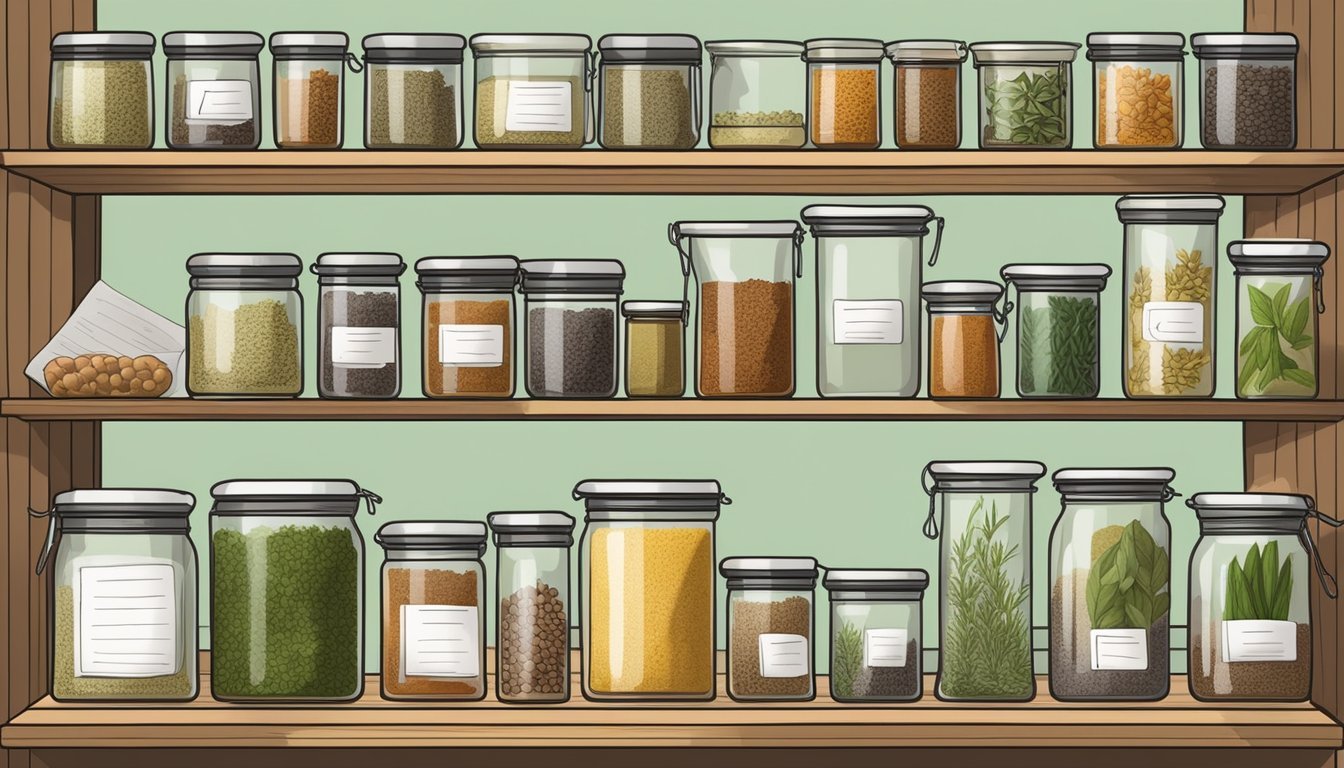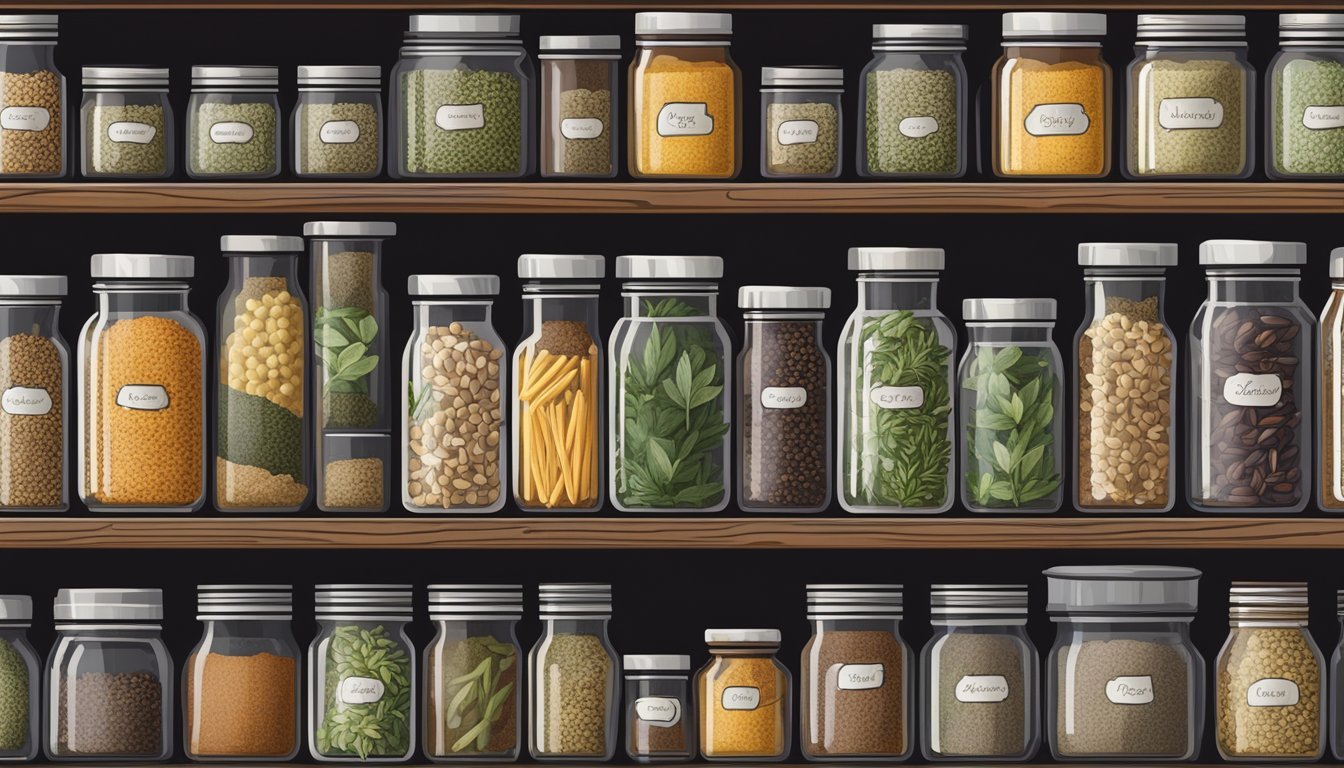How to Store Herbs and Spices for Longevity
Optimal Preservation Techniques
Proper storage of herbs and spices is essential to maintaining their freshness and potency over time. Both herbs and spices play critical roles in culinary arts, offering a spectrum of flavors, aromas, and health benefits. While they are often used interchangeably in conversations about cooking, each has distinct characteristics that demand specific storage considerations. Spices, which typically come in dried and ground form, are derived from various parts of plants such as seeds, bark, roots, and fruits. Meanwhile, herbs are generally the leafy parts of plants, and can be used in both fresh and dried forms.
To retain the vibrant flavors of herbs and spices, it is important to understand the factors that can degrade their quality. Exposure to heat, light, and moisture can accelerate the loss of aroma and flavor and may lead to spoilage. Therefore, finding an appropriate storage space is crucial. A consistent ambient temperature around 70°F, away from direct sunlight and heat sources, is usually recommended for spices. Herbs, on the other hand, may require different methods depending on whether they are fresh or dried. Fresh herbs (how long do fresh herbs last?) can benefit from being stored in a jar with water, akin to a bouquet of flowers, to extend their freshness.
Dried herbs and ground spices fare best when kept in tightly sealed containers to limit exposure to air and moisture. Non-porous materials such as glass, ceramic, or metal are preferred for container choices. Transparent containers should be stored in dark cupboards or drawers to minimize light exposure, which can lead to fading of color and flavor. By attentively addressing these aspects of storage, the longevity and efficacy of herbs and spices can be significantly extended, enhancing everyday cooking experiences.
Understanding Herbs and Spices
Herbs and spices are integral to culinary practices, enhancing both the flavor and aroma of food. Proper storage is crucial for maintaining their potency and freshness.
Types of Herbs and Spices
Herbs typically refer to the leaves of plants that are used for flavoring or as a garnish. They can be found fresh or dried and include varieties such as basil (how long does basil last?), parsley, and thyme. Spices, on the other hand, are usually derived from other parts of the plant, such as seeds, berries, bark, or roots, and are predominantly used in dried form. Examples of spices include cinnamon, nutmeg, and black pepper.
Dried Herbs: Preserve their flavor for about 1 to 3 years
Dried Spices: Generally maintain their quality for about 2 to 4 years
Cinnamon, Nutmeg, Black Pepper
Benefits of Proper Storage
Proper storage of herbs and spices extends their shelf life by safeguarding against factors that lead to deterioration:
Flavor: Protection from heat and light helps retain essential oils, which are responsible for flavor.
Aroma: Storing them in airtight containers prevents the aroma from dissipating.
Potency: Consistent temperatures and a dark environment prevent the breakdown of active compounds.
Freshness: Moisture control keeps the herbs and spices dry, preventing mold growth and clumping.
Herbs and spices bring character to dishes. By focusing on correct storage methods, their sensory qualities can be preserved, and their contribution to culinary creations remains significant.
Preparation for Storing
Before storing herbs and spices for longevity, one must ensure they are properly prepared to maximize their shelf life. The preparation process involves meticulous cleaning and drying, as well as sorting through your spices and herbs to discard any that may not be suitable for storage.
Cleaning and Drying
When preparing herbs and spices for storage, it's critical to remove any dirt or impurities that might have accumulated. For fresh herbs, they should be gently washed in cold water and then thoroughly dried. The drying process can involve patting them with a paper towel or laying them out on a clean cloth until they are free from moisture. For spices, if they're freshly ground or made at home, ensure they are completely dry before storing to prevent mold.
Herbs: Wash gently; dry completely.
Spices: Ensure home-ground spices are free from moisture.
Sorting and Discarding
After cleaning, it is important to inspect the herbs and spices. Discard any leaves that show signs of wilt or decay and any spices that have lost their potent aroma, as these are indicators of reduced quality. It's also the perfect time to get rid of any waste material, like stalks or other non-flavor-contributing parts of the plant that might have been mixed in.
Look for signs: Wilted or decayed leaves; stale or weakened aroma.
Remove waste: Stalks; other non-flavor contributing parts.
Short-Term Storage Solutions
For herbs and spices that will be used within a short time frame, it's essential to manage temperature, light, and air exposure to maintain their vibrancy and flavor. The refrigerator and countertop options offer suitable environments for managing these elements.
Using the Refrigerator
Refrigeration can prolong the freshness of certain herbs similarly to how it preserves the longevity of vegetables. It's best suited for leafy herbs rather than dried spices. To store herbs in the refrigerator:
Wrap the herbs in a damp paper towel to retain moisture.
Place them inside a plastic bag or container, leaving a small opening for air circulation.
For delicate herbs, a salad spinner can be used to gently wash them before storage, careful not to bruise the leaves.
Countertop Options
Countertop storage is more suited for dried spices and whole herbs that don't require refrigeration. Here ways to maximize their shelf life on the counter:
Choose a spot away from direct sunlight and sources of heat like the stove to prevent degradation of flavors.
Opt for airtight containers made of glass, metal, or ceramic to protect from moisture and air.
Keeping containers uniform in size can facilitate easy organization and access within the kitchen space.
Long-Term Storage Techniques
For herbs and spices to retain their flavor and efficacy, it's essential to implement proper storage techniques. Temperature control, exposure to light, and prevention of moisture are critical factors for preserving the integrity of these ingredients over an extended period.
Freezing Herbs
Freezing fresh herbs is a reliable method for extending their shelf life while maintaining much of their flavor profile. Herbs can be frozen by laying them flat on a baking sheet until solid and then transferring them to a sealed container or plastic bag. Alternatively, one can chop the herbs, mix them with oil or water, and freeze them in an ice cube tray. Once solidified, the herb cubes can be stored in freezer bags.
Drying and Dehydrating
For drying herbs and spices, one needs to ensure that all moisture is removed to stop bacterial growth and mold. Herbs can be air-dried by hanging them in bunches in a warm, dry, and well-ventilated area away from direct sunlight. Alternatively, a dehydrator can provide a more consistent result by using controlled temperatures. Spices and herbs should be stored in airtight containers made of glass, ceramic, or metal to shield them from light and moisture. It's advised to label containers with the date of drying to keep track of freshness.
Optimizing Spice Shelf Life
To maintain the potency and flavor of spices, understanding the difference between whole and ground spices as well as the ideal storage conditions is crucial. This section will provide insights into how to best preserve your spices for the longest shelf life possible.
Whole vs. Ground Spices
Whole spices tend to retain their flavor and potency for a longer period than ground spices. Whole spices can generally remain fresh for about 1-2 years and are less exposed to the elements that accelerate spoilage.
Whole spices: Up to 2-3 years
Ground spices: 6 months to 1 year
By opting for whole spices over ground spices, one can grind them as needed, ensuring a fresher taste and a longer shelf life.
Ideal Conditions for Spices
Spices are sensitive to temperature, light, and humidity; these factors can degrade their quality faster. To optimize spice shelf life, they should be stored in a dry, cool, and dark environment. Here are specific conditions to aim for:
Temperature: Below 70°F (21°C)
Light: Store in opaque containers to protect from light
Humidity: Ensure low humidity, well-sealed containers to prevent moisture ingress
By maintaining these conditions, the flavor and vitality of spices are preserved, maximizing their shelf life and culinary contribution.
Container and Packaging Choices
Choosing the right type of containers and proper labeling practices are crucial for maintaining the freshness and extending the shelf life of herbs and spices.
Selecting the Right Containers
When selecting containers for storing herbs and spices, glass jars with airtight seals are the gold standard. Glass is nonporous and does not transfer odors or chemicals, preserving the quality of the contents inside. It is essential that the jars have tight-sealing lids to prevent exposure to air, which can degrade the spices over time.
Airtight Containers: Essential to keep moisture and air out, ensuring spices stay dry and flavorful.
Tins: Metal tins with airtight lids can also be used, particularly for keeping light-sensitive spices in a dark environment.
Opaque Containers: To protect from light, opaque containers are beneficial, especially if storing spices in a place that is subjected to light.
Labeling for Freshness
A robust labeling system is essential to track the freshness and potency of herbs and spices. Labels should include the name of the herb or spice and the date it was stored.
Date of Packaging: Writing the packaging date on labels helps determine the shelf life.
Contents: Clearly label the container with the spice or herb name for easy identification.
Using a consistent labeling system assists with inventory management and ensures that the oldest stock is used first. Regularly updating labels when spices are repackaged or newly purchased also contributes to better quality control.
Table 1: Recommended Labeling Information
Information Description Spice/Herb Name Clear naming to avoid confusion with other similar-looking spices. Packaging Date The date when the spice or herb was stored or repackaged. Best Before Date Optional but useful to remind of the expected shelf life.
Placement and Organization
The longevity of herbs and spices is significantly impacted by how they are placed and organized within a kitchen. Proper storage solutions can not only extend their shelf life but also make them easier to access during cooking.
Organizing Herbs and Spices
When it comes to organizing herbs and spices, the most effective method is to store them in a drawer near the food preparation area. This placement allows for easy access and visibility. One should aim for a systematic arrangement, perhaps alphabetically or by frequency of use, to ensure that finding the right spice while cooking is a seamless process.
Drawer Organizing Tips:
Label tops of containers for overhead visibility.
Use shallow drawer inserts to prevent bottles from moving.
In larger kitchens, dedicating a cabinet solely for spices can also serve the purpose, given that the shelves are tiered or stepped for easy visibility and access.
Avoiding Contamination and Degradation
To prevent contamination and degradation of herbs and spices, it is crucial to keep them in a cool, dry place out of direct sunlight. This means one must avoid storing them above or near the stove, where heat and steam can accelerate the loss of flavor and potency.
Ensure containers are tightly sealed to keep moisture out.
Opt for glass or metal containers over plastic to reduce the risk of chemical leaching.
By adhering to these practices, one protects herbs and spices from environmental factors that can compromise their quality and diminish their flavor.
Special Considerations for Specific Herbs
Different herbs require varied storage methods to ensure their longevity and retain their flavors. In particular, leafy herbs and oily, savory herbs should be handled with specific care.
Storing Leafy Herbs
Leafy herbs such as basil, cilantro, parsley, and mint are delicate and prone to wilting. They benefit from being treated like fresh flowers upon storage:
Moisture Control: Wrap the herbs in a damp paper towel and place them in a zip-top bag, leaving it partially open for air circulation. Alternatively, one can place the stems in a glass of water, covering the leaves with a plastic bag.
Temperature: Store them in the warmest part of the refrigerator, typically the door, except for basil which prefers room temperature away from sunlight.
Preserving Oily and Savory Herbs
Herbs like oregano, rosemary, and thyme contain more oils, giving them a sturdier structure and a longer shelf life when stored properly:
Air Circulation: These herbs benefit from being loosely wrapped in a paper towel and stored in a perforated plastic bag in the refrigerator.
Drying: For long-term storage, air drying or using a dehydrator preserves their flavor and allows them to be kept in an airtight container for several months.
By adhering to these storage techniques, leafy and oily herbs can be preserved to maintain freshness and flavor for an extended period.
Maintaining Quality and Potency
To ensure herbs and spices maintain their best quality and potency, one must manage two critical factors: the timing of replacement and the methods for maximizing flavor during cooking.
When to Replace Herbs and Spices
Herbs and spices do not last indefinitely; they lose their color, taste, and aroma over time. It is generally recommended to replace dried herbs every 1 to 3 years and ground spices every 6 months to 2 years. Whole spices can last longer, up to 4 years, but they should be checked periodically for signs of spoilage. A stale or muted smell, faded color, or lackluster flavor in a recipe can signal it’s time for replacement.
To track this, use clear labeling on containers with purchase or opening dates. A simple visual or aromatic check can help determine whether a seasoning is past its prime. Spices and herbs should be vibrant in color and smell and impart a distinct flavor when fresh.
Maximizing Flavor in Cooking
Using herbs and spices at their peak of freshness ensures the most flavorful outcome in recipes. To maximize their flavor, one should:
Grind spices as needed when cooking, as pre-ground spices lose their potency faster.
Toast whole spices before grinding to enhance their flavor.
Add most spices early in the cooking process to give them time to release their flavors.
Incorporate delicate herbs, like basil and cilantro, towards the end of the cooking process to prevent flavor loss.
Storing herbs and spices correctly also contributes to their effectiveness in cooking. Keep them in a cool, dry place, away from heat, moisture, and direct sunlight which can hasten deterioration. Since heat can accelerate the loss of essential oils in spices, avoid placing them near stovetops or other hot appliances. Using airtight containers, preferably glass with a rubber or silicone gasket, can considerably extend shelf life and ensure that recipes are seasoned to perfection.
Sustainable Practices
Sustainable practices in storing herbs and spices involve strategies that reduce waste and use eco-friendly storage methods. These practices not only extend the longevity of these ingredients but also contribute to an environmentally responsible cooking culture.
Reducing Waste
Individuals can significantly cut down on waste by purchasing whole spices and grinding them as needed, since whole spices maintain their potency for a longer duration, typically 3-4 years. Buying in bulk and storing in smaller quantities minimizes potential waste of expired spices. Additionally, sourcing spices from local producers or growing one's own herbs can decrease the environmental impact of transport and packaging.
Sustainable Storage Methods
Choosing sustainable storage methods is crucial for maintaining the quality of herbs and spices, while also being mindful of environmental impacts. Glass containers are a reusable and recyclable option that does not react with spices, thus preserving their flavors. Preferably, these containers should be amber-colored or opaque to protect the contents from sunlight.
Biodegradable or compostable bags: An alternative for short-term storage, especially for dried herbs.
Reuse of containers: Clean and repurpose existing spice jars instead of discarding them.
Magnetic tins: They can be refilled and attached to a metal surface, saving space and keeping spices in reach without extra packaging.
Incorporating these practices not only ensures the longevity of herbs and spices but also aligns with sustainable living standards.






